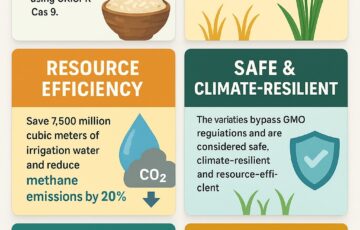Revamping Indian Education Through National Education Policy 2020 Reforms
Revamping Indian Education Through National Education Policy 2020 Reforms
Syllabus:
GS-2:
Education, Welfare Schemes, Issues Related to Children, Human Resource, Skill Development, Government Policies & Interventions
Focus:
The National Education Policy 2020 is undergoing phased implementation, aiming to revolutionize Indian education through innovation, global competitiveness, and employability. Recent data on internships, research growth, and improved employment rates indicate that the NEP 2020 reforms are translating into tangible changes in India’s education and labour landscape. The education policy in India has taken a significant leap forward with the introduction of the National Education Policy 2020, addressing long-standing challenges in the sector and emphasizing the integration of vocational education into mainstream education.
National Education Policy 2020: Vision, Structure and Innovation:
a) Structural Transformation
- The National Education Policy 2020 introduces a long-term, phased educational reform with a clear NEP 2020 implementation timeline.
- The NEP 2020 structure focuses on flexibility, innovation, and alignment with global standards.
- Emphasizes indigenous knowledge systems alongside international best practices.
b) Three-Fold Objective
- The aims and objectives of NEP 2020 include encouraging indigenously-rooted research and innovation.
- Enhances global competitiveness in education of Indian institutions.
- Prepares students for multi-career pathways, enabling lifelong learning and promoting the vocational education integration in higher education.
Key Government Initiatives Related to Higher Education:
- National Education Policy (NEP) 2020
○ Aims to transform higher education through multidisciplinary learning, flexible curricula, and vocational education in NEP 2020.
○ Targets a 50% Gross Enrolment Ratio in higher education by 2035.
○ Encourages research, innovation, and industry-academia collaboration.
- Institutions of Eminence (IoE) Scheme
○ Launched in 2018 to grant complete academic and financial autonomy to 20 top institutions.
○ Designed to help Indian universities achieve global excellence.
- National Credit Framework (NCrF)
○ Integrates school, vocational, and higher education with a seamless credit system.
○ Credits are stored in a digital Academic Bank, accessible through Digilocker.
- Revamped Accreditation & Ranking
○ NIRF (2015) ranks institutions to foster healthy competition and transparency.
○ NAAC is being modernized to enhance quality benchmarks in higher education.
- Digital Initiatives
○ SWAYAM offers free online courses across disciplines, including online vocational education options.
○ National Digital Library provides free access to academic resources.
- Study in India Program (2018)
○ Aims to increase international student enrolment through scholarships and streamlined processes.
- Foreign Universities in India
○ UGC 2023 guidelines allow top 500 foreign universities to set up Indian campuses.
- SHE under INSPIRE (DST)
○ Provides scholarships to students pursuing natural and basic sciences, promoting research careers. |
Enhancing Employability: Bridging Education with Industry:
a) Four-Year Undergraduate Programmes
- Introduces flexible degree options that allow exit and re-entry.
- Students can earn recognized credentials even before degree completion.
- Designed to prevent dropouts and encourage continuous education.
b) Vocationalisation and Internships
- Over 197 universities and 93 colleges now offer internships as part of the vocational education in NEP 2020.
- Students gain practical exposure and develop real-world competencies.
- Vocational education aligned with industry requirements enhances job readiness, highlighting the importance of vocational education in the modern job market.
c) Apprenticeship Model
- Diploma holders and early graduates get on-the-job training through vocational education integration in higher education.
- Apprenticeships are partially government-funded and provide stipends.
- Bridges classroom learning with industrial application.
Research and Global Competence: Building Knowledge Ecosystems:
a) Growing Research Infrastructure
- 242 universities and 113 colleges have R&D cells, showcasing research innovation in NEP 2020.
- Vibrant research internship programmes promote hands-on learning.
- Number of patents filed rose by 158% from 2021-22 to 2022-23.
b) International Recognition
- 11 Indian universities ranked in QS Top 500.
- India has the highest representation (163) in QS Asia Rankings 2025.
- 10 Indian institutions now rank in the top 50 globally for specific disciplines, highlighting global competitiveness in education.
c) Policy Support and Collaborations
- Introduction of Anusandhan National Research Foundation (ANRF) to fund research.
- AICTE’s IDEA Labs foster product development and innovation.
- SPARC promotes global academic collaborations with 28 countries including US, UK, Germany, and Australia.
Indigenous Innovation and Grassroot Empowerment:
a) Reviving Indian Knowledge Systems
- National Education Policy 2020 integrates traditional wisdom into modern curriculum.
- Efforts include focus on vision, pedagogy, and historical contexts in education.
b) Smart India Hackathon
- Cultivates innovation among youth through problem-solving competitions.
- Over 13.9 lakh students have participated since inception.
- Submissions have grown sevenfold since 2017.
Employment Trends Post-NEP: Data-Driven Progress
a) Youth Employment Gains
- Between 2018-19 and 2023-24, youth employment improved steadily.
- Male employment rate at 53.4%, female at 22.7%, nearing 2004-05 levels.
- Female employment post-2017-18 increased to 30.7%.
b) All-Age Employment Surge
- Overall employment reached 43.7% in 2023-24, a significant recovery from earlier dips.
- Indicates a structural improvement in the labour market post-pandemic.
c) Rise of Formal Employment
- Share of regular workers among men increased from 17.2% (2004-05) to 24.88% (2023-24).
- Decline in casual labour, especially among females: from 30.31% to 16.68%.
- Transition from unorganised to structured employment suggests enhanced job quality.
Conclusion:
The National Education Policy 2020 represents a paradigm shift in Indian education, integrating practical exposure, global competitiveness, and indigenous wisdom. With improved research output, employment metrics, and global rankings, the NEP 2020 reforms are proving to be a transformative force. India’s youth now stand better equipped for both local relevance and global opportunities.
The NEP 2020 structure and implementation timeline focus on holistic education, emphasizing the vocational education integration in higher education. This approach recognizes the need for vocational education in India’s evolving job market. The policy aims to introduce vocational streams early, with vocational education starting age set lower to instill dignity of labor and practical skills from a young age.
One of the key NEP 2020 focus areas is to enhance vocational education in NEP 2020 through comprehensive skill development programs. The policy outlines plans for skill labs, partnerships with local industry, and the use of new age skills like artificial intelligence, robotics, and the Internet of Things in vocational skills curriculum. This focus on skill subjects in NEP 2020 is designed to improve workforce competitiveness and prepare students for the 21st-century job market.
The vocational education integration in higher education is another crucial aspect of the National Education Policy 2020. This includes plans for enhancing the role of polytechnics and Industrial Training Institutes, and creating pathways for vertical mobility from vocational education to higher education. The policy also emphasizes the importance of vocational education and the use of technology in delivering vocational training.
To support these initiatives, the National Education Policy 2020 outlines the need for robust infrastructure requirements and industry partnerships. It promotes public-private partnerships to enhance the quality and relevance of vocational education. The policy also aligns with the National Skills Qualifications Framework to ensure standardization and recognition of vocational skills.
Research and innovation in NEP 2020 are given significant attention, with plans to integrate research at all levels of education. This includes promoting innovation in training methodologies and encouraging students to engage in research from early stages of their education.
The benefits of NEP 2020, particularly in the realm of vocational education, are expected to be far-reaching. By focusing on practical skills, professional training, and aligning education with industry needs, the policy aims to enhance employability and foster innovation. It also seeks to preserve and promote LokVidya (traditional Indian knowledge systems) alongside modern vocational skills.
As the NEP 2020 reforms implementation progresses, its focus areas continue to evolve, responding to the changing needs of the education sector and the job market. The policy’s emphasis on vocational education and skill development is a significant step towards creating a more competent, innovative, and globally competitive workforce in India. The vocational education system in India is set to undergo a major transformation, with the vocational education integration in higher education playing a crucial role in shaping the future of Indian education and employment.
Source: TH
Mains Practice Question:
Discuss how the National Education Policy (NEP) 2020 addresses the challenges of employability and innovation in India’s higher education system. How far has it succeeded in aligning education with industry requirements and global competitiveness? Support your answer with examples from recent data and policy developments.






